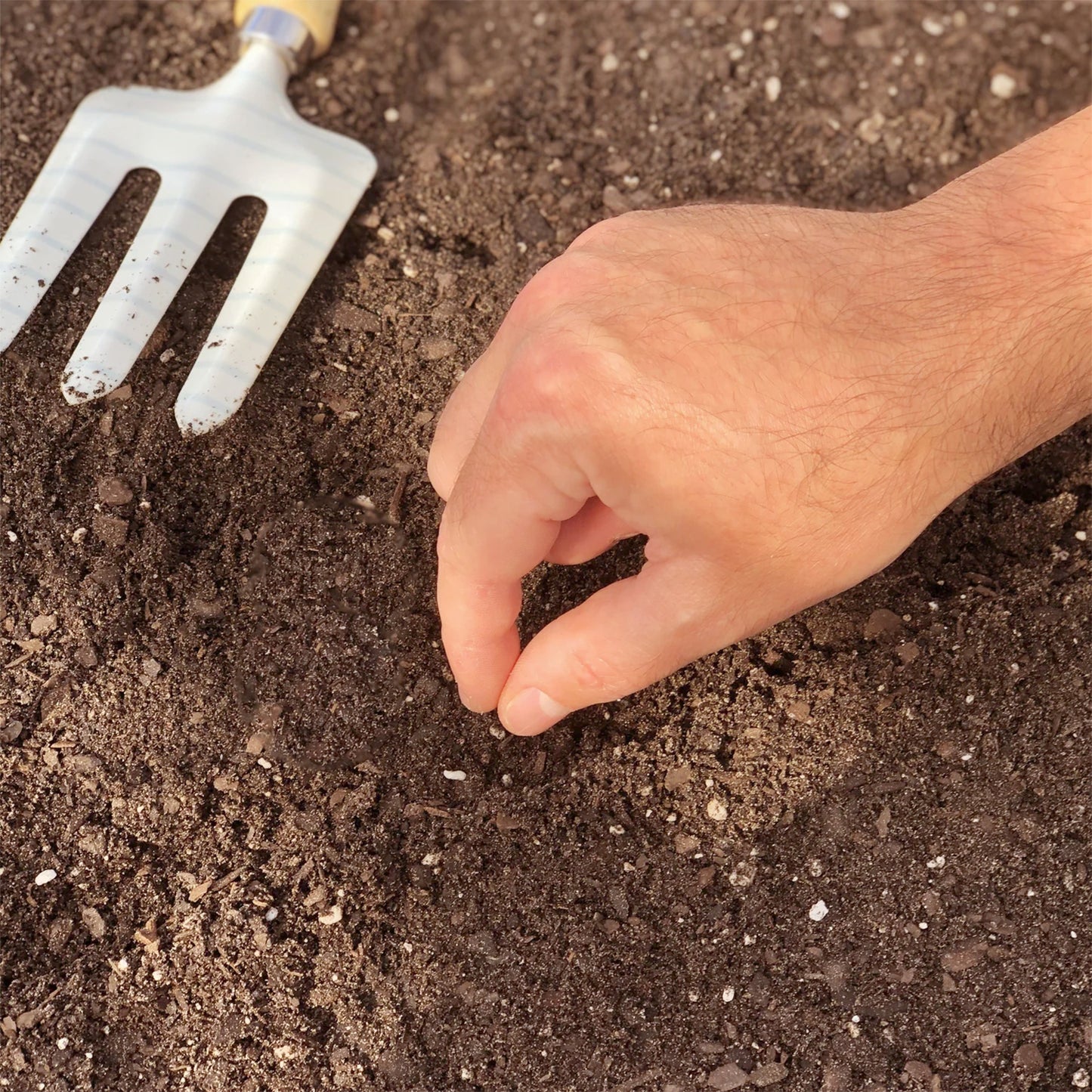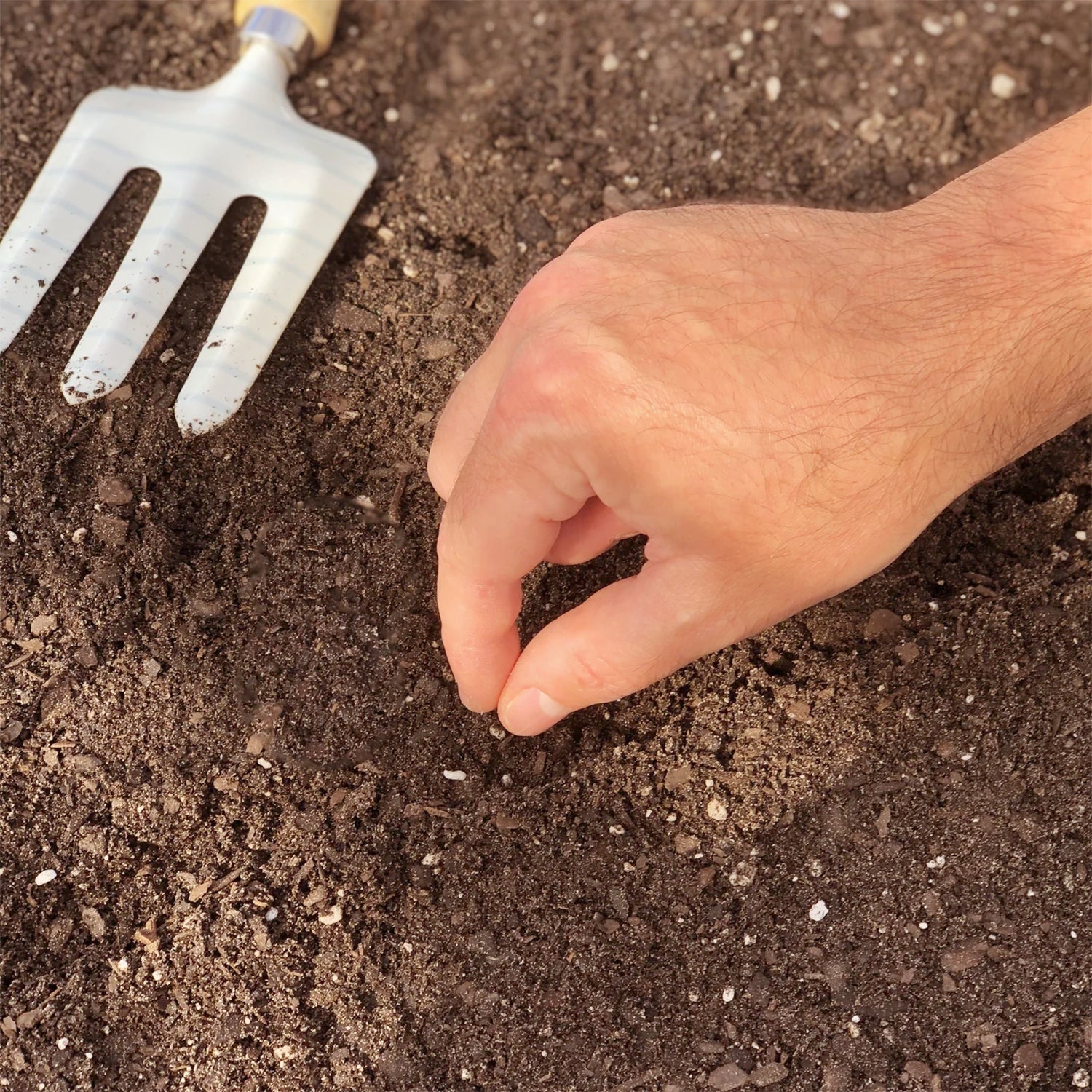10% Off E-Gift Cards With Promo Code | View All Offers >
Calendula, Neon Seeds
Earn 4 points for this item with our
rewards program.

These Calendula, Neon Seeds are a colorful addition to any garden.
This is a fantastic hardy annual to include in this season's garden! Perfectly formed orange flower buds emerge and open to produce truly amazing ultra-double flowers. These densely set, rounded blooms offer a guaranteed focal point with deep orange petals perfectly edged in burgundy. An excellent selection for cut flowers, these 4-5cm (1.5-2") blooms will brighten any site. As a natural anti-inflammatory, Calendula's benefits go beyond aesthetics. Add them to your garden and enjoy their healing properties all season long.
- SKU: 143437
- Common Name: Pot marigold
- Botanical Name: Calendula officinalis
Safe
for Bees
Good For Pollinators
Grows
Best In:
Days to
Germination:
Water
Needs:
Days to
Maturity:
Best
Container Size:
Growing Height:
- Plant Type: Flower
- Plant Lifecycle: Annual (plant every year)
- Seed Type: Open Pollinated
- Fill Weight (grams): 500 mg
- Approximate Seed Count: 55-60
- Characteristics: Profuse bloomer | Attracts butterflies and pollinators | Container friendly
- Planting Method: Direct Sow
- Colour: Brilliant orange edged in burgundy
- Water Needs: Average 2.5-5 cm (1-2 in.) per week
- Days Until Bloom: 42 - 56 days
- Harvest/Bloom Season: July to Frost
- Landscape Use: Border / Edge Planting
- Tolerance: Poor Soil
- Companion Planting:
Plant near asparagus, beans, broccoli, Brussel sprouts, carrots, cucumbers, potatoes, pumpkins, and tomatoes
Calendula seeds can be sown directly into the garden when the soil is warm and all danger of frost is passed. Soil temperature (not air temperature) should be warmer than 15°C (60°F) for seeds to germinate. Planting at a lower temperature will delay germination. Choose a location that receives at least 6 hours of sunlight daily. Space seeds and plant to the depth indicated below. Press seeds into the soil to ensure good contact and cover with 6 mm (1/4 in.) of soil. After planting, water the seeds with a gentle mist or shower. A hard spray can wash soil away, dislodge seeds and clump them together. It is critical to keep the soil consistently moist, but not soggy during germination. Do not let the soil dry out, as young plants have underdeveloped roots and can quickly dehydrate, particularly in windy conditions. When your seedlings reach a height of a few centimetres (inches) and have developed 2 or 3 pairs of leaves, it is important to thin them out, according to the plant spacing indicated below to provide good air circulation and room to grow. More seeds can be succession planted every 2 to 3 weeks until mid July for a continuous harvest of blooms. For earlier blooms, seeds can be started indoors 6-8 weeks before the last frost in your area. Follow the seed depth and spacing guidelines indicated below. Once all danger of frost has passed, seedlings should be hardened off before planting in their growing location. Seedlings should be transplanted according to the plant spacing directions below. Regularly monitor your plants and ensure that the soil remains moist while they establish themselves in their new environment.
- Planting Depth: 6 mm (1/4in.)
- Seed Spacing: 5 cm (2 in.)
- Plant Spacing: 20-25 cm (8-10 in.)
- Instructions for Nutrient Care: Apply SUPERThrive once per week. Soak in solution of 1/4 tsp per gal for 15 min. or longer depending on size and type.
- Pinching back the early flower buds will help your plants to promote more branches and grow bushier. Wait until the plant is 20-25 cm (8-10 in) tall, cut off the top couple 5 cm (2 in) of the plant, directly above a set of leaves. Within a week, you will notice new stems sprouting from where you had cut the plant. This process will also cause the entire plant to branch out even more, giving rise to additional stems. The new stems will be longer because they will grow from the bottom of the plant instead of along the main stem.
- Regularly removing spent flowers, known as deadheading will promote continuous blooming and encourage the growth of fresh buds.
- Calendula makes a great companion plant in a vegetable garden because it attracts beneficial insects and repels unwanted pests including tomato worms and nematodes.
- Harvest calendula flowers for indoor arrangements when they are about 1/2 way open.




Calendula, Neon Seeds
Register to receive a notification when this item comes back in stock.
Thanks! We'll let you know when this item is back in stock.
You may also like

Join our rewards program today to start saving!

Free Shipping on orders over $35

There are a ton of ways to earn!







